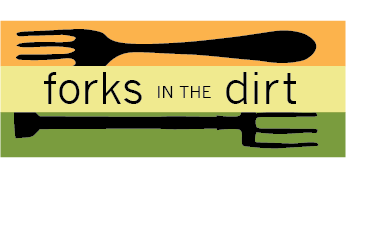
Local Info to Get You Growing
More Americans are growing their own food – the numbers have been rising and were bumped up with the pandemic last spring, and the trend is here to stay!
Let’s take a tour of the places and faces of our local gardening scene!
Minnesota Garden Organizations

We’re so lucky our state values agriculture in all it’s forms!
The Minnesota State Horticultural Society has a long history of being at the forefront of helping northern gardeners thrive! Their resources include classes, Magazine The Northern Gardener, blogs, Seed collecting and distribution and bringing ‘Garden in a Box’ kits to communities across the state.
Part of the University of Minnesota extension services, the Master Gardener program educates volunteers. These volunteers educate residents in proven, eco-friendly gardening techniques to improve our environment. The Master Gardeners also accept questions via email via the “Ask a Master Gardener” link on the site. This site goes from soil sampling and seed sowing, to preserving the harvest.

The U of MN BEE LAB is another amazing resource for gardeners looking to work with nature and her ultimate pollinating machines. Resources on plant options, City Beekeeping rules and native pollinator trends abound.
Wild Ones is all about Native Plants + Natural Landscapes. They teach people about the importance of native plants, for the health of the environment and everything living in it. Our goal is to get more native plants in the ground in all landscapes — homes, businesses, schools, and more. They have a few different MN chapters so be sure to find the best fit for your area!
Local Plant Sales for 2023

These plant sales will start your garden off right! Good for your garden, the pollinators, your harvests and the community. Plants grown for these sales are never treated with Neonicotinoid pesticides, are non-GMO, locally raised by experts- and the sales directly benefit some great gardening programs.
Friends School Plant Sale
May 12th-14th, at the State Fair Grounds
With 1,000’s of plant varieties this may be the largest single plant sale in the U.S. It is a fundraising event for the Friends School of Minnesota, a small Quaker K-8 school in St. Paul. Plants are grown as naturally as possible, 80% from local growers.

Ramsey County Master Gardeners Plant Sale
May 20th, 2022 – 9 a.m. to 2 p.m.
Church of the Holy Childhood
1435 Midway Pkwy, St Paul
Over 300 varieties of plants grown by local master gardeners. The proceeds from this sale benefit the University of Minnesota Extension Master Gardener programs in Ramsey County.
Garden Clubs
Garden Clubs are a great way to get involved with your group of local gardeners. Most hold monthly meetings with speakers during the off season (Sept-April) with plant sales, community garden and other causes they support. Many towns and counties have their own clubs, here are a few I know and love.
Community Gardens

The YMCA Community Gardens have raised beds for rent!
Our town boasts some fabulous community gardens. I’ve got an article about community gardens and why they matter. These are places where all levels of gardeners grow together. Some of these have classes, and ‘in service’ times when a more experienced gardener will be on site.
Seed Libraries

A seed library is just what it sounds like, a place where you can “check out” a packet of seeds to grow, enjoy the fruits or flowers of your labor. Then, bring back enough seeds to replenish and hopefully increase the seed stock for the next season, for FREE! More info in the article Seed Saving Starts Now !
Our very own White Bear Lake Public Library houses the volunteer run WBL Seed Library. Join their email list at the website above to stay in the know about packing and class events
The Minnesota Horticultural Society runs the MN SEED project and the pop up Como Community Seed Library are also great resources for local seed.
Many Paths to Eating Local

If you love fresh and local food but not gardening, you can support our local farmers by signing up for a CSA (Community Supported Agriculture) and I have a blog post all about some great local CSA options in the CSA’s So Many Ways Blog Post. Or if you’re like me and grow a lot, but not everything your family eats, try shopping our very own White Bear Lake Farmers Markets, starting up the last Friday in June. I have some Farmers Market Shopping Tips for you too. If you’d like to check out more on some specific farmers, dig into my Farmers page, which links to interviews with local small farms.

For more “How To” info, you can always check out the Forks in the Dirt Blog, or Instagram feed where I sift through lots of local food info and have full blog posts on CSA’s, gardening tips, upcoming garden events and recipes for using your harvest.
Whichever way you choose to eat locally, I hope you Dig Your Food!
Michelle





























 Welcome to KDE Farms
Welcome to KDE Farms



















 Of course the taste is far better than you can buy in the grocery store, and the nutritional value is higher because of freshness… but after a few common truths, the reasons we grow our food are as wonderfully varied as each garden. I see this as part of the inherent beauty of growing your own food. Beauty in diversity through and through♥!
Of course the taste is far better than you can buy in the grocery store, and the nutritional value is higher because of freshness… but after a few common truths, the reasons we grow our food are as wonderfully varied as each garden. I see this as part of the inherent beauty of growing your own food. Beauty in diversity through and through♥!













